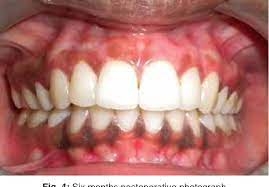Physiologic pigmentation refers to the natural coloring of the skin, hair, and eyes that is determined by genetics. The most common form of physiologic pigmentation is melanin, which is produced by cells called melanocytes. Melanin is responsible for the color of the skin, hair, and eyes, as well as for protecting the skin from the harmful effects of the sun's ultraviolet (UV) rays.
Introduction:
There are two types of melanin: eumelanin, which gives skin and hair a brown or black color, and pheomelanin, which gives skin and hair a red or blond color. The amount and type of melanin produced by the melanocytes is determined by genetics and can vary widely among individuals.
Physiologic pigmentation can also be affected by factors such as UV exposure, hormones, and certain medications. For example, exposure to UV light can stimulate the production of melanin and cause the skin to tan. Hormonal changes during pregnancy can also cause changes in skin pigmentation, such as the darkening of certain areas of the skin known as "pregnancy masks" or "melasma." Some medications can also cause changes in skin pigmentation.
In general, physiologic pigmentation is a normal and healthy process that helps protect the skin from the harmful effects of the sun's UV rays. However, excessive or uneven pigmentation can be a sign of a medical condition and should be evaluated by a healthcare provider.
Physiologic pigmentation refers to the natural coloring of the skin, hair, and eyes that is determined by genetics. It is caused by the production of a pigment called melanin by cells called melanocytes. Melanin is responsible for the color of the skin, hair, and eyes, as well as for protecting the skin from the harmful effects of the sun's ultraviolet (UV) rays.
There are two types of melanin: eumelanin, which gives skin and hair a brown or black color, and pheomelanin, which gives skin and hair a red or blond color. The amount and type of melanin produced by the melanocytes is determined by genetics and can vary widely among individuals.
Physiologic pigmentation can also be affected by factors such as UV exposure, hormones, and certain medications. For example, exposure to UV light can stimulate the production of melanin and cause the skin to tan. Hormonal changes during pregnancy can also cause changes in skin pigmentation, such as the darkening of certain areas of the skin known as "pregnancy masks" or "melasma." Some medications can also cause changes in skin pigmentation.
In general, physiologic pigmentation is a normal and healthy process that helps protect the skin from the harmful effects of the sun's UV rays. However, excessive or uneven pigmentation can be a sign of a medical condition and should be evaluated by a healthcare provider.
There are several benefits to physiologic pigmentation:
-
Protection from the sun's UV rays: Melanin helps protect the skin from the harmful effects of UV radiation.
-
Natural beauty: The natural coloring of the skin, hair, and eyes can be aesthetically pleasing.
-
Genetic diversity: The wide range of physiologic pigmentation among individuals adds to the diversity and beauty of the human population.
-
Cultural significance: In some cultures, certain features, such as dark skin or black hair, are associated with beauty and are highly valued.
-
Normal and healthy process: Physiologic pigmentation is a normal and healthy process that occurs naturally in the body.
It's worth noting that while physiologic pigmentation can have these benefits, it's important to protect the skin from excessive UV exposure to prevent skin damage and skin cancer. This can be done by wearing sunscreen, protective clothing, and seeking shade when the sun is at its strongest.
There are generally no negative consequences to physiologic pigmentation, as it is a normal and healthy process that occurs naturally in the body. However, excessive or uneven pigmentation can be a sign of a medical condition and should be evaluated by a healthcare provider.
Some conditions that can cause abnormal pigmentation to include:
-
Melasma: This is a condition that causes dark patches on the skin, typically on the face. It is often triggered by hormonal changes, such as during pregnancy or while taking certain medications.
-
Vitiligo: This is a condition that causes the loss of pigment in certain areas of the skin, resulting in white patches. It is thought to be caused by an autoimmune disorder.
-
Post-inflammatory hyperpigmentation: This is a common condition that occurs after the skin has been injured or inflamed, such as after a cut or burn. It can cause dark patches on the skin that can take months or years to fade.
-
Solar lentigines: These are also known as "age spots" or "liver spots." They are small, dark spots that appear on the skin as a result of prolonged sun exposure.
If you have excessive or uneven pigmentation and are concerned about a possible medical condition, it's important to consult a healthcare provider for a proper diagnosis and treatment.
In conclusion, physiologic pigmentation refers to the natural coloring of the skin, hair, and eyes that is determined by genetics. It is caused by the production of a pigment called melanin by cells called melanocytes. Physiologic pigmentation is a normal and healthy process that helps protect the skin from the harmful effects of the sun's UV rays. While it generally has no negative consequences, excessive or uneven pigmentation can be a sign of a medical condition and should be evaluated by a healthcare provider. It's also important to protect the skin from excessive UV exposure to prevent skin damage and skin cancer.


